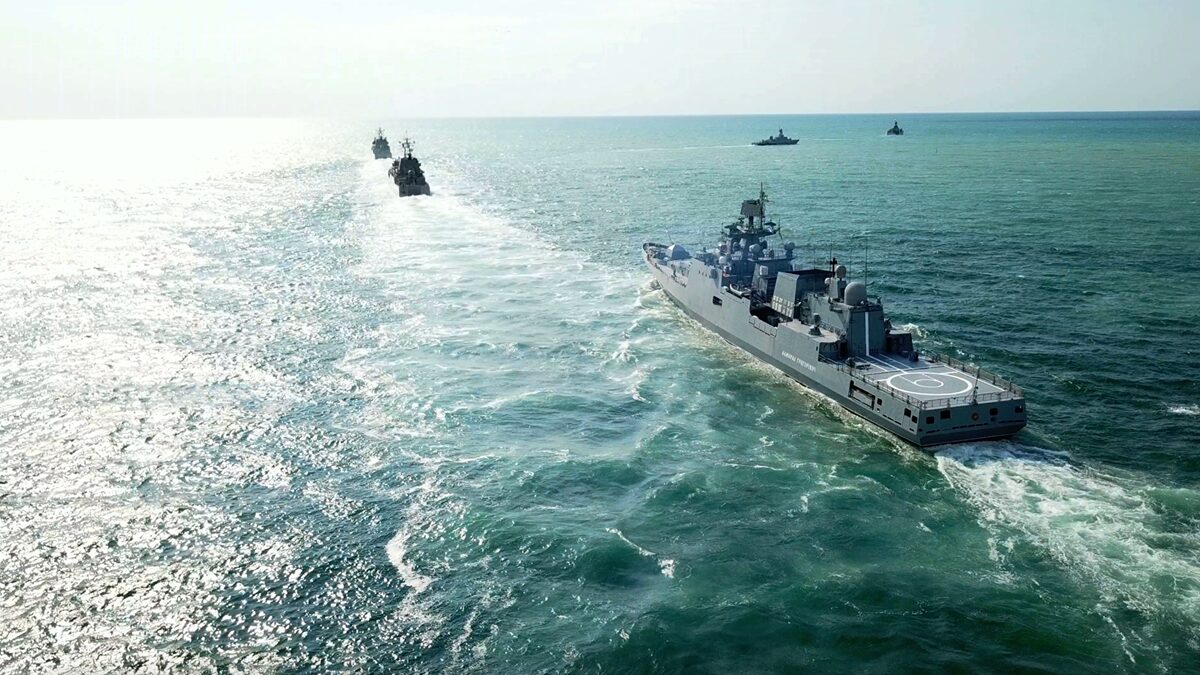Australia’s drone tech sector takes flight amid global defence demand

Pic: Getty Images
- Australia’s defence technology sector continues to make leaps and bounds
- Companies such as DroneShield have garnered strong investor followings over the past few years
- Another Aussie company says it has recently cracked the ‘holy grail’ of drone flight tech
Special Report: Australia’s defence technology sector is soaring, with homegrown drone innovators developing world-first capabilities that are drawing global attention.
Companies such as the Sydney-based DroneShield (ASX:DRO) particularly exemplify how Australian engineering is meeting the surge in global demand for modern defence systems.
DRO has become a global leader in counter-drone and electronic warfare systems. Its technology detects, identifies, and neutralises drone threats and has been used by militaries and governments worldwide – including on the frontlines in Ukraine.
Founded by a team of engineers and now led by CEO Oleg Vornik, DRO has grown into one of Australia’s fastest-rising defence success stories. Once described as a “meme stock”, the company’s share price has surged more than 780% in the past year, propelling it into the ASX 200.
DRO’s systems are designed and built in Sydney, where its growing team develops advanced AI-driven tools that can detect and classify signals – from drones to missile seeker heads – using radio frequency analysis.
The company has also completed major European contracts for dismounted and vehicle-mounted counter-drone systems as Europe accelerates its defence spending under the €800 billion (AUD $1.43 trillion) ReArm Europe plan.
CEO Oleg Vornik has positioned DRO as a symbol of Australia’s sovereign defence potential – one that is agile, deeply technical, and globally competitive.
“We don’t have ambition to become the next Lockheed Martin,” Vornik says.
“But there’s so much more to be done in counter-drone technology.”
Freespace Operations: Cracking the ‘holy grail’ of drone flight
While DRO protects against drones, Melbourne-based company Freespace Operations is redefining what drones can do.
Founded in 2019 by engineers Ken King and Leonard Hall, the company has achieved a world-first breakthrough dubbed Cooperative Lift – allowing multiple drones to work together to carry shared payloads of up to 100kg.
The feat, long considered a ‘holy grail’ of drone engineering, has already secured Freespace a multimillion-dollar defence contract in the Indo-Pacific region.
Built on the company’s proven Callisto 50 heavy-lift platform, the innovation allows drones to complete missions previously limited to helicopters – such as resupply, ship-to-ship delivery, and industrial transport – but at a fraction of the cost and risk.
Freespace’s Callisto 50 drone was recently tested during Exercise Talisman Sabre 2025, where its drones demonstrated fully automated ship-to-ship and ship-to-shore resupply.
“Universities and drone manufacturers have been trying for years to crack Cooperative Lift,” said Freespace co-founder Ken King.
“Our breakthrough proves it can be done safely, reliably and at scale. It opens up a whole new range of missions that can be handled by drones rather than crewed aircraft.”
Bootstrapped, profitable and breaking boundaries
Freespace is entirely self-funded and profitable, which is unusual in a sector dominated by venture capital.
In just five years, it has delivered 29 Australian government and defence contracts worth more than $9 million, alongside commercial projects for utilities and infrastructure providers such as Infravision and Enerven.
The breakthrough builds on the company’s Ship Ops technology, which allows drones to interact with moving vessels via remote beacons. Together, Ship Ops and Cooperative Lift represent a step-change in logistics, not only for militaries but also for industries such as mining, energy and disaster relief.
Leonard Hall, Freespace’s co-founder and chief technology officer, and a leading contributor to the global open-source ArduPilot project, said Cooperative Lift was among the hardest problems in drone engineering.
“It might sound intuitive to just add another drone, but the variables are enormous – from the movement of the load to changing wind conditions,” Hall said.
“We could only achieve it because the Callisto 50 is such a proven and reliable platform to begin with.”
The advance comes as Australia seeks to develop sovereign drone capabilities amid shifting strategic priorities in the Indo-Pacific. Under AUKUS and the National Reconstruction Fund, unmanned systems are increasingly seen as critical to both defence and economic resilience.
This article was developed in collaboration with Freespace Operations, a Stockhead advertiser at the time of publishing.
This article does not constitute financial product advice. You should consider obtaining independent advice before making any financial decisions.
Related Topics
UNLOCK INSIGHTS
Discover the untold stories of emerging ASX stocks.
Daily news and expert analysis, it's free to subscribe.
By proceeding, you confirm you understand that we handle personal information in accordance with our Privacy Policy.








